Mike Doyle is president and CEO of QPID Health of Boston, MA.

Tell me about yourself and the company.
This is my fifth company as president and CEO. I was attracted to this opportunity because we understand the clinical frustration that physicians, nurses, and clinicians of all types are having accessing data in the electronic health record.
QPID can read both structured and unstructured data. We’ve built a very extensive medical vocabulary and medical ontology that enables physicians and nurses at the appropriate point of the clinical workflow to have access to both structured as well as unstructured clinical data. It solves a major pain point that exists today.
What’s wrong with EHRs and what gets better when you install QPID?
First of all, I’m not here to knock EHRs. We partner with a number of EHRs. I think EHRs are necessary, but not sufficient.
Part of the issue is the way that most of them evolved. They are billing applications that evolved into clinical applications over time. The way the data is organized in the EHR is very, very different from the way a physician practices. As a result, there’s a disconnect with serving up appropriate information at an appropriate point in the care delivery model that exists today in the United States.
EHRs are forms of data repositories with a transactional chassis built into them. I believe that most EHRs, if not all EHRs, would greatly benefit from applications like QPID that allow easy retrieval of the really important data that exists and resides in the EHRs.
Give me two or three examples of what an EHR user can do with QPID that they can’t do without it.
Three-quarters of the record is generally text. It’s almost impossible to report out in any sort of a systemized way textual information and deliver at a point of care that makes sense. As a result, physicians generally look at two or three notes, see a patient, and then either make a diagnosis or do a particular procedure. A lot of information is contained in the record that is never used to render an opinion. You have a tremendous amount of overutilization, duplicate testing, that sort of thing.
Think of QPID as Google plus CliffsNotes, delivered at an appropriate point in the clinical workflow. It allows the physician or the nurse to have relevant and complete information about the patient to render a better medical decision.
As an example — and this happens all across the country — you go in for a colonoscopy. You go through the awful bowel prep for that. As much as 20 percent of the time, you show up to the GI doc for your procedure and you realize that you have either sleep apnea or you’re on blood thinners or five or six other risk factors that are in your record, but no one chose to look at that information in your record prior to showing up for that particular procedure. As a result, the procedure gets cancelled because the patient would be in undue or unnecessary risk at that particular day.
QPID, two weeks before the procedure, goes into the record and looks for risk factors associated with a colonoscopy. They could be either in structured fields or they could be in free text. To the extent it finds that information, it alerts the nurse administrator or the physician’s office that Mike Doyle is on blood thinners, and then the nurse can call Mike Doyle and say, “Hey, please discontinue your blood thinner, because to the extent we find a polyp, we’re going to want to remove it. We don’t want to have excess bleeding.”
That’s one small example. Every patient, for example, at Mass General, the Brigham and Women’s Hospital … if they come through the ED and they’re going to have an MRI, QPID goes into the record and looks for any evidence of metal in the body anywhere. To the extent it finds it, it alerts the person doing the procedure that this MRI is likely to cause harm to the patient, so we probably shouldn’t do an MRI.
Some might say it sounds like data warehousing or analytics, but those don’t provide real-time clinician feedback.
Yes, we can actually do it prospectively.
The other thing that is really interesting that we’re doing is we’re eliminating the need for prior authorization of procedures. If you’re a cardiologist at Mass General and you use one of the major health plans in the Boston area, if you use QPID, you do not have to call an insurance company to do a particular cardiology procedure. This is a big deal, because MGPO — the physician’s organization at Mass General – employs 300 people who do nothing but call insurance companies for prior authorization for a particular procedures. The insurance companies have an equal army of people that answer the phone and either accept or deny a particular procedure.
We’re automating that entire process by loading in the national guidelines for how to care for a particular cardiology procedure. QPID is intelligent enough to know the relative risk factors and the health status of the patient, compares it to national guidelines, and recommends or suggests data that will allow a physician to do a particular type of procedure. Ultimately, it’s the physician’s choice if he decides to follow those guidelines, those recommendations, but the insurance companies are finding this compelling enough that they’re starting to eliminate the need for them to physically or audibly speak to the patient, the physician themselves.
We built up cardiology. We’re now building out a whole series of orthopedic procedures, abdominal procedures. The idea is that over time, Mass General will be able to redeploy those resources that were spent calling insurance companies to get prior authorization elsewhere in the organization, which obviously saves a tremendous amount of time and money and increases throughput of procedures. We think using the power of a natural language processing engine with clinical intelligence and guidelines is the future of medicine. We’ve taken this now to various other parts of the country and talking to other payers as well as providers and it’s resonating with them.
Is it used everywhere within Partners?
On an official basis, no. On an unofficial basis, yes. It’s used in eight different hospitals in Partners, including the Brigham, now officially. But Dana-Farber, the Faulkner, Newton Wellesley, North Shore, Spaulding … it’s used in all the hospitals across the spectrum. I’ve never seen a piece of software where doctors have sold it to other doctors.
We’re doing our Series B fundraising right now. We’ve had a bunch of VCs talking to physicians from Partners hospitals and they have said that it’s the only piece of software they have seen that actually helps them do their job. The validation for that is that we’ve got close to 9,000 registered physicians and nurses using this in the Partners system, all without any sales, marketing, or support dollars associated with that adoption across the different hospitals.
Partners developed and is commercializing QPID. How much of its use is mandatory?
Zero mandatory use of it. It’s all voluntary.
If Partners developed it and it’s so useful, why don’t they mandate its use?
I don’t think they had to mandate it. It’s done it itself. What’s happening now, though, because insurance and payers are starting to take note of this and are offering essentially an incentive to use it because you don’t have to call in an insurance company, it’s going to have any greater official adoption, probably mandatory adoption among physicians, surgeons, and folks who do procedures. But it’s not mandated right now.
How many other hospitals outside of Partners use it?
We’ve sold two, which is what we said we would do last year. We sold it to two hospitals outside of Partners. One, it’s going to be deployed via the cloud, the other one’s going to be behind a firewall. I’m not at liberty at to say who they are right now, but one has a major EHR which is used predominantly in academic medical centers. The other one is an EHR which is the most widely deployed in the world.
Neither of those are live yet?
They are not. They will be soon.
Was it hard to take that custom built product and then do the translations and all the ontology and the metadata needed to turn a commercial EHR’s information into what you need in QPID?
First of all, Partners is a federation. It’s a combination of well-known EHRs as well as homegrown EHRs. I think we pull data from nine different databases, financial as well as clinical databases. We’ve had to build virtually a whole bunch of different sort of interfaces to be able to enable that to happen.
The medical ontology is very similar by specialty across the United States. We’ve got a vast library of thousands and thousands of hours of ontology that we’ve built. There are some regional differences, but if you’re an internist, you’re interested in certain things which may be different than if you’re a GI doc or an ED doc or a cardiologist or whatever you may be, but very, very similar vocabulary across the country.
That has not been difficult at all. We’ve got interface experts from most of the major EHRs on our staff, or consultants for the company, so we know how to do that. I ran an EHR company before this, Medsphere. We did a whole bunch of integration work there with lots and lots of different systems, so we know how to do it.
Having worked both for an EHR vendor and now for a company offering an EHR add-on, will EHRs will continue to be the center of the healthcare IT universe?
I think for the foreseeable future. They serve a very useful purpose of amalgamating data. I think it’s going to be interesting to see what happens with the big data warehouses as well as the HIEs.
One of the things we’re finding is that in partnering with HIEs, we could create a business model that’s sustainable for HIEs. That’s kind of interesting. I think we could also partner with clinical data warehouses and provide functionality to them as well.
EHRs are here to stay for at least the next 10 or 15 years. I think they’ve got to morph their business model to some extent and I think they have to partner with companies like ours that add usability and functionality to the user experience.
Despite the “big data” buzz, information that’s already available from inside the four walls isn’t always used to make decisions. Is that your selling point when you go in with QPID?
Yes, completely. First of all, if you actually look at how hospitals are built, there’s generally different systems, inpatient and outpatient systems. Those systems generally don’t talk to each other. There’s also a number of IDNs that may have the same inpatient and outpatient system, but they don’t talk from hospital to hospital together. What QPID does today is it bridge between inpatient and outpatient systems and pull data from both systems and present a unified view of the patient. We can do that across hospitals or across different systems when we do that today.
The real issue, and the interesting thing that’s going to happen in the not so distant future, to your point, is there’s a tremendous amount of useful information in the electronic health record that is either dormant or buried and won’t see the light of day. But it’s extremely useful. You can see a scenario down the road where, this litigation, because something goes wrong with a patient, and the information was contained in the record but the physician never saw the information, didn’t bother to look for the information, or the information was buried or filed in the wrong clinical drawer, so to speak. The physician looked in that drawer, didn’t find anything, but yet the information was there, was just misfiled.
This idea that there’s important information in the record that never sees the light of day is a big issue. Unless we come to grips with that and use applications like QPID that can read both structured and unstructured data and find that information no matter where it is buried or stored … the only way patient safety is going to improve when information is included in the record and can’t be accessed is with applications like QPID.
Is QPID a listener-type application that’s working in the background or do you have to interact with it to receive its alerts?
It’s not an alert system, but if there’s information about the patient, then there’s a little blue Q that lights up during the clinical workflow of the physician. You’re alerted to the fact that there’s information there. You just click on QPID and then the information is presented to you the way you want to see it.
If you’re an internist, we do 300 simultaneous queries of information. If you’re an admitting physician at Mass General, before you admit the patient, look at 300 different things organized around organ systems. If there’s information in those various boxes of those 300 things we’re looking at, it’ll blacken the area. If there’s new information, it’ll gray out. You can just hover over that information and see exactly what QPID is alerting you to take a look at.
Do you log the information the software presented and then track how many times it was acted upon or judged useful?
Yes. It’s all logged, every interaction and every patient encounter. We had 2.96 million clinical encounters last year that the Partners system has logged.
The log itself should be useful, either from a product standpoint in knowing how often it provides value or to check the near-misses that QPID caught for root cause analysis.
We’ve looked at it, but Partners also looks at it all the time. One of the things they want to do is look for those near-misses and then change process to prevent them going forward. A number of hospital systems out there are talking to us because of that issue where there’s a bunch of near-misses that are unreported or they’re reported in the EHR but no one sees them. They’re really concerned from a risk compliance standpoint that that information is there but no one’s doing anything with it. QPID can sit out on top of all of this information and it knows what a near-miss is. On a nightly basis, it can report and show them to compliance and they can look at the log files and figure out what happened.
What capability has Partners found most useful?
If you ask the CFO, he’ll tell you that we’ve brought in millions of dollars in the area of coding, because the clinical documentation doesn’t support a rejected code. We’ve automated the process by which to the extent that a claim is rejected, QPID automatically knows what that code is and then knows what clinical documentation supports that code and goes into the record to see if there is supporting clinical documentation around that code and attaches it if it finds it. Then the claim gets resubmitted. We’ve brought in millions and millions of dollars for Mass General in particular doing that, as one example.
We’ve taken out tremendous labor through the idea of eliminating prior authorization. Through our Q-Guides application, we’ve increased patient safety by discovering metal in a patient before they go into an MRI machine. We’ve reduced cancellations of procedures because we find risk factors before the patient shows up. We’ve decreased malpractice rates and malpractice claims because we’ve increased patient safety. We’ve proven all that.
We’ve increased clinical throughput and workflow, because it takes about 10 minutes on average for physicians to look at a patient’s record and often it’s incomplete, look at it before a patient shows up for a visit. The time to discover what’s going on with a patient is less than two minutes at Mass General and it’s complete information because we serve it up the way they want to see it, the type of information they want to see. We’ve validated that. We’ve decreased the time it takes to inboard a radiology patient by tenfold. It used to take about 20 minutes, it’s like two to three minutes now because QPID does all the work behind the scenes, it gets all the information they need.
We’ve automated the pre-population of anesthesia forms, which is a laborious process. We’ve got a registry product — it costs about $80 to $200 to populate a registry and it’s all manual labor, nursing and doctor time. Out of the box, QPID can pre-populate about 85 percent of it, so we can reduce the cost of compliance and registry, make it much less expensive and much quicker. It’s a whole bunch of different things that we do today.
What are the goals for the next three or four years?
The goal is in the next three or four years to have 20 integrated delivery networks and academic medical centers. We want to complete our Series B, which we’re in the process of doing right now. We’ve got one term sheet and we’re about to get another one today. We’ll have probably at the end of the day three term sheets. We’ll have a West Coast office as well as an East Coast. We’re headquartered in Boston; we’ll also have a San Diego office. We’ll have a sales organization, a marketing organization, which we’re building right now.
All this has been done with Mike Zalis, the founder; myself; and Rick Toren, who is the founder of CodeRyte and Active Health. We met with 30 IDNs and academic medical centers to understand what their needs were. We’ll really change and improve patient safety and healthcare across the country. We’ll actually generate a return on investment on hospitals’ EHRs, which I would argue they’re not getting today. At the end of the day, we’ll be pleased because we’ll have made a difference in a lot of people’s lives for the better.


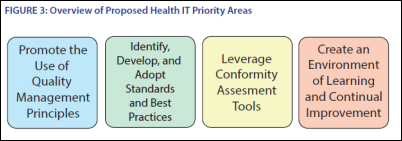



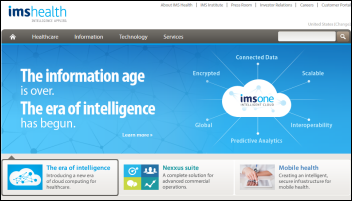





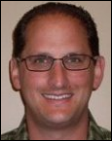
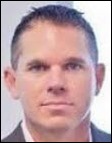
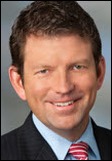
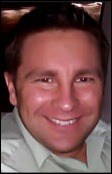



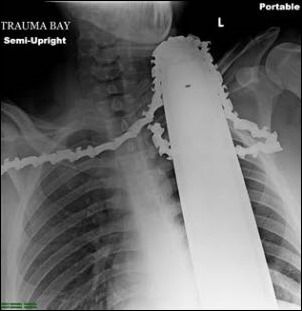





































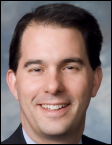
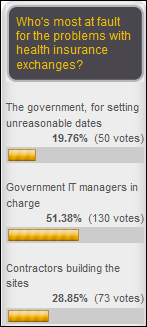
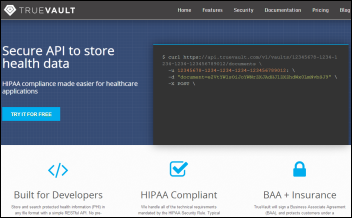
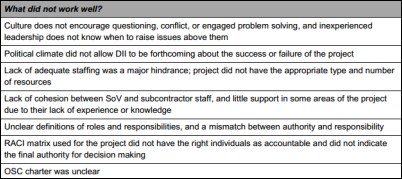

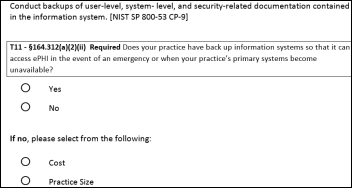


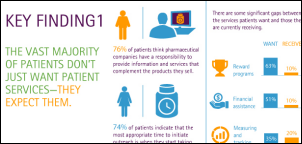














































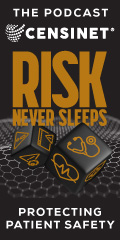









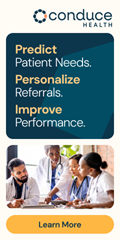


























Hard agree with "actionless figure" - I realize that LinkedIn is the only mostly-non political form of social media we…